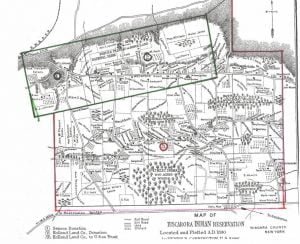Miss Mary Thayer Labors as a Missionary Teacher
In the year of 1850 there was another school house built by the natives under the proposition of Miss Mary J. F. Thayer. I have here a brief history of her labors among the Tuscarora, from her own writings, which is very interesting, to wit: At the invitation of Rev. G. Rockwood (then the ordained missionary at Tuscarora) Miss M. J. F. Thayer commenced her labors among the Tuscarora as teacher on April 30, 1849, in the old school-house opposite Mr. Rockwood’s house, receiving from the American Board one dollar and fifty cents per week, besides her board. There were … Read more

